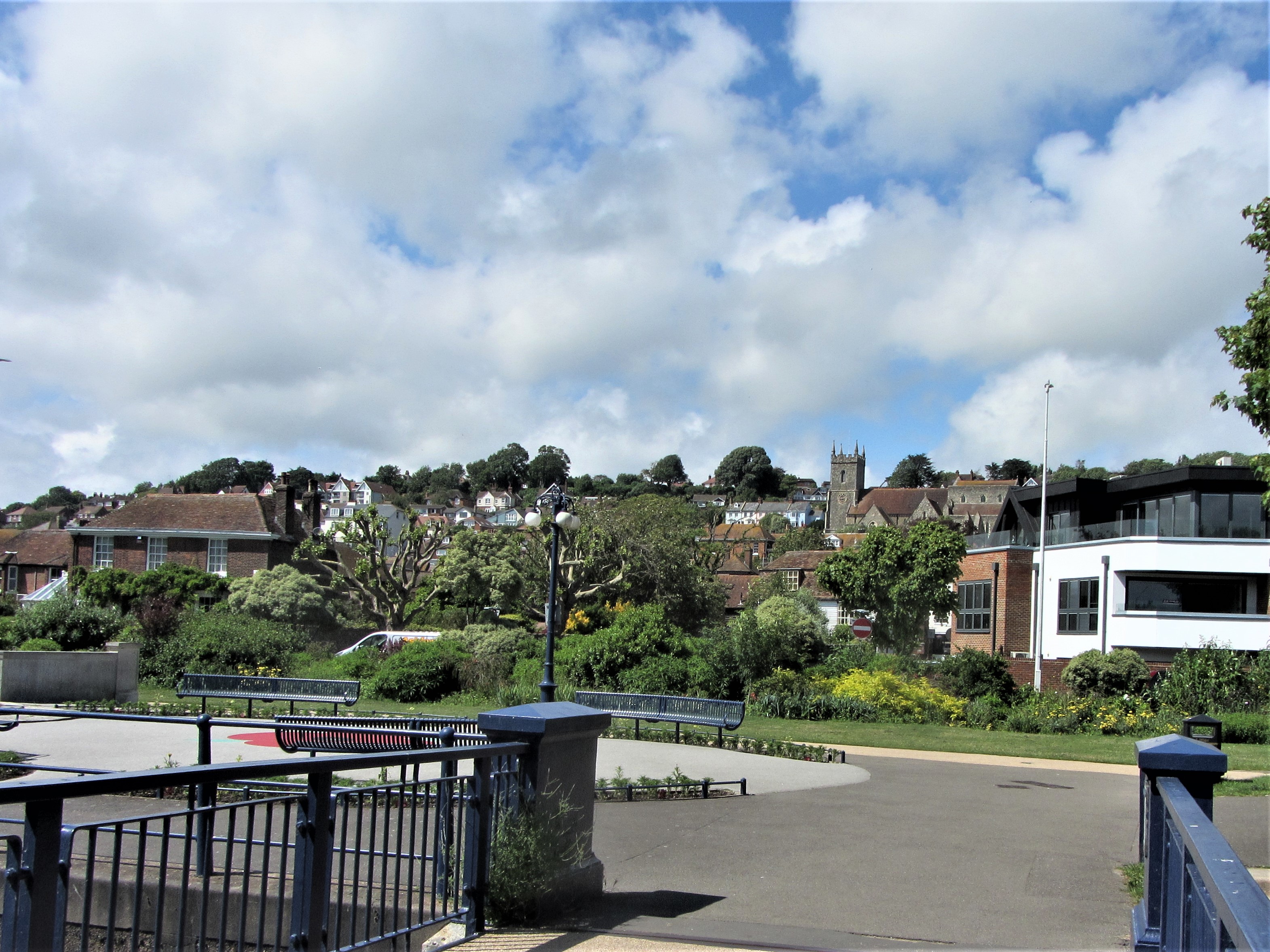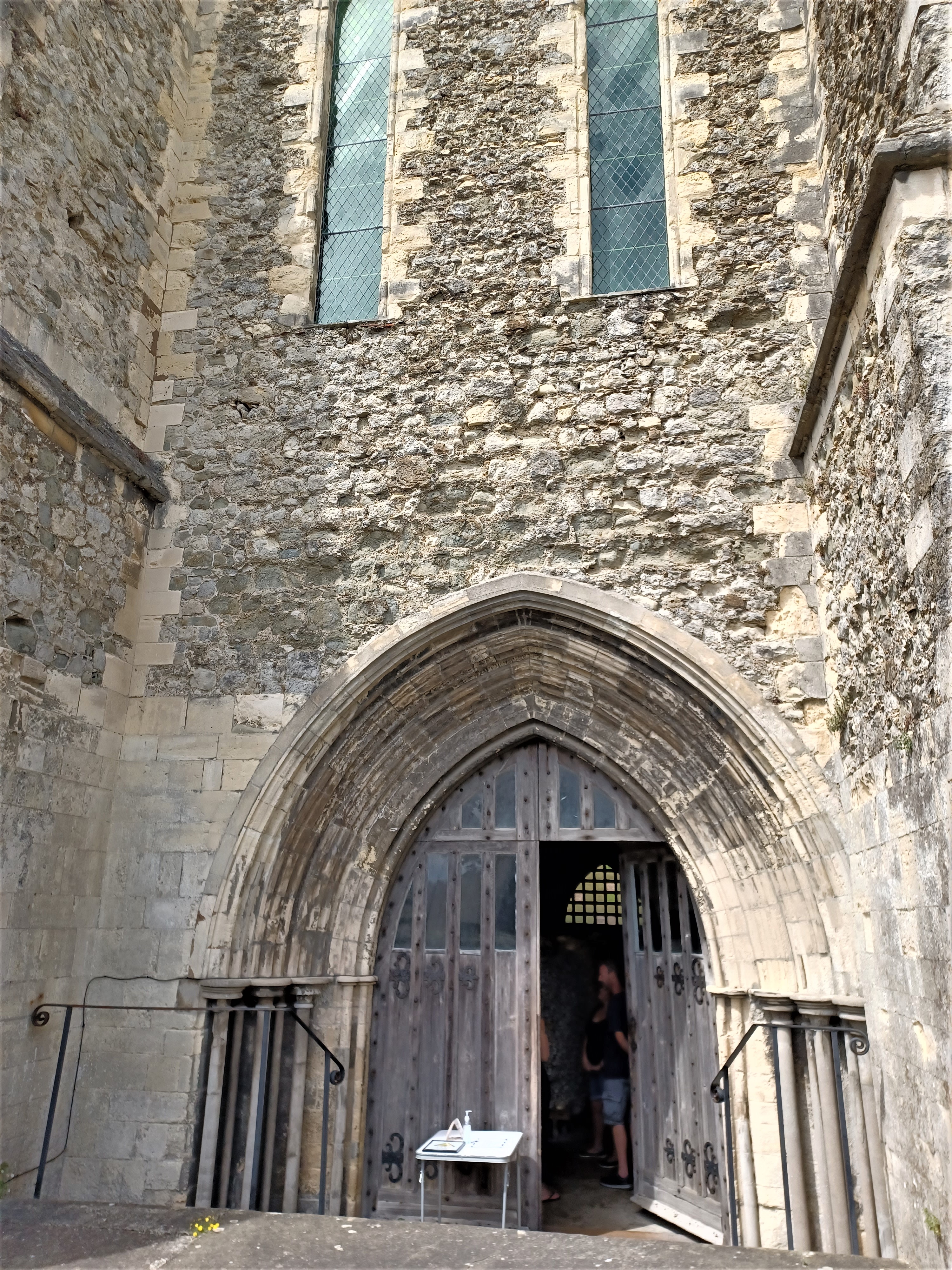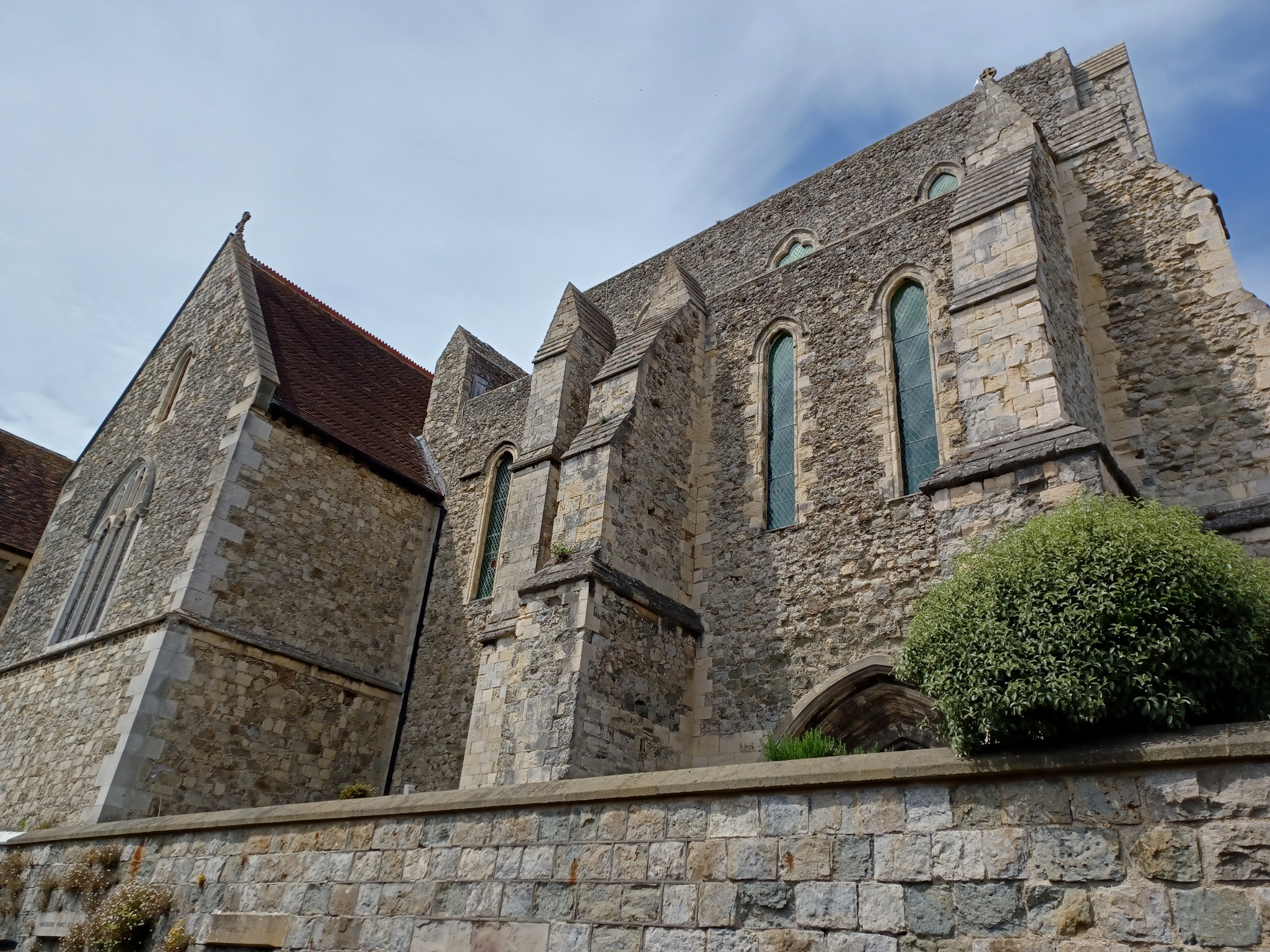When St Leonard’s Church was built c.1030 the sea would have been at the bottom of the cliff on which it stands and where Hythe’s High Street is now would probably have been the quayside of the Cinque Port of Hythe. The sea is now over half a mile away.
The short climb to the church made me breathless on the scorching hot day we visited, but it was well worth the effort: (for those who can’t walk to the church there appears to be private parking for the church off Oak Walk but I don’t know if visitors can park there, however further along Oak Road there are a few places where it’s wide enough to park on the road).
It’s a very large, impressive church. Successive Archbishops of Canterbury had a large estate at nearby Saltwood so it’s thought they were responsible for the enlargement of the church c.1120; many Norman features can still be seen. The interior of the church has some interesting features and we had a good look round while listening to a young man practising on the magnificent organ built by Harrison and Harrison in 1936. St Leonard’s has suffered much damage over the years; in1739 the west tower collapsed, probably having been weakened in a severe earthquake in 1580 and in 1940 a German bomb destroyed the Victorian glass in the east window. A replacement stained glass window was installed in 1951.
All the time I was inside I was looking for an entrance to the crypt, which is what I really wanted to see. I couldn’t find one, but as we walked out of the main door we saw a sign pointing outside to the crypt, which had its own entrance – slightly hidden behind a wall on the right of the church as one approaches it from the High Street.
The entrance charge to the ossuary in the crypt is £3 for adults and 50p for children. There were two other people already inside and a young lady volunteer was telling them the likely history of the skulls and other bones. After we’d had a good look at collection at the further end of the crypt we went back towards the entrance and the young lady then gave us some information – that it was the largest and best preserved collection of human skulls and bones in Britain and is now thought to represent the remains of at least 2,000 individuals. The earliest reference to the collection was in 1678. The volunteer pointed out a number of skulls that indicated injury from sharp objects like swords: early theories about the origins of the bones suggested they were from Danish pirates, soldiers killed at the Battle of Hastings or Anglo Saxon fighters. However, more recent research found a higher proportion of females to males so the likelihood is that the bones belonged to local people who had been buried in several different graveyards that had closed by 1500 and the bones moved. Further research found evidence of chronic iron deficiency due to poor diet, arthritis and malaria.
It was a fascinating place and I can thoroughly recommend a visit.
Opening times and days for 2023 are:
It was open at Easter and it will be open again from May 1 to the end of September from Monday to Saturday.
Times: 11.00 am to 1.00 pm and 2.00 pm to 4.00 pm.
Address: Oak Walk, Hythe, CT21 5DN







